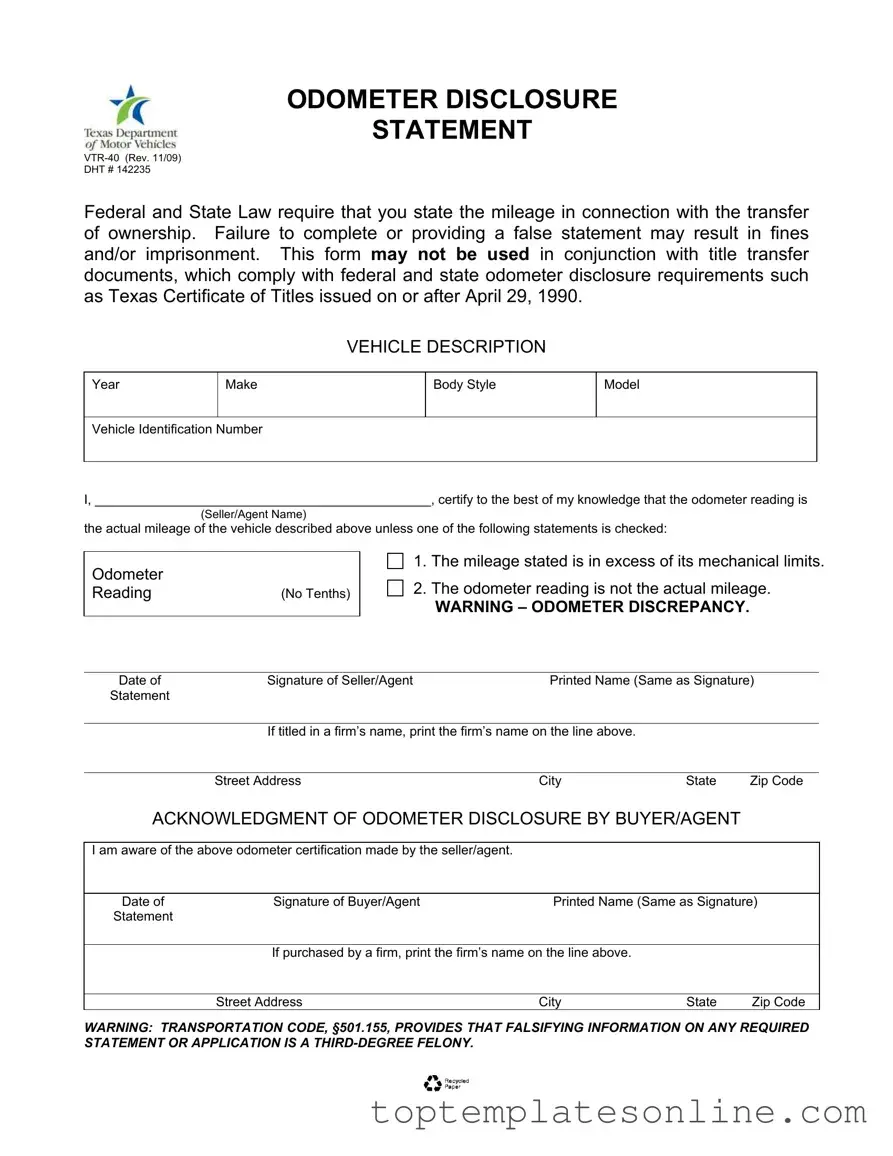The Texas Odometer Statement form, officially known as VTR-40, plays a crucial role in the transfer of vehicle ownership within the state. This form is mandated by both federal and state law, requiring sellers to disclose the accurate mileage of a vehicle at the time of sale. It is essential for both buyers and sellers to understand that failing to complete this form correctly or providing false information can lead to serious legal consequences, including fines and potential imprisonment. The form captures vital details such as the vehicle's year, make, model, body style, and Vehicle Identification Number (VIN), ensuring that the transaction is well-documented. Sellers must certify that the odometer reading reflects the actual mileage unless specific exceptions are noted, such as if the mileage exceeds mechanical limits or if the reading is not accurate. Additionally, the form includes a section for the buyer to acknowledge the odometer disclosure, reinforcing the importance of transparency in the sale. Notably, the Texas Odometer Statement cannot be used in conjunction with title transfer documents that meet federal and state requirements, particularly those issued on or after April 29, 1990. Understanding the implications of this form is vital for anyone involved in buying or selling a vehicle in Texas.
